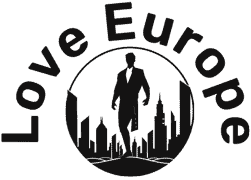Dalmatians, the ultimate menswear accessory, and a clutch of sporting greats are just some of the national successes that Croatia will bring to the EU when it joins the bloc on July 1.
“At all events, people who deny the influence of Europe’s ‘smaller nations’ should remember that the Croats have the rest of us by the throat,” wrote Norman Davies in his book “Europe: A History”.
The British historian was referring to a tie or cravat — worn every day by millions of men worldwide — whose Croatian origin reaches far into the past and is linked to love and devotion.
“For centuries girls were tying scarves around their darlings’ necks, namely when they were leaving for wars, as a token of love and fidelity, they were ‘tying’ or obliging them,” explains Marijan Busic, founder of the Academia Cravatica, a non-governmental organisation.
Revealingly, the word “croata” can be found in many languages as the root of words meaning tie or cravat: the historical reason comes from the tight neck scarves worn by Croatians in the French army during the Thirty Years War in the 17th century.
The humble tie was soon accepted as a fashion accessory by the powerful French court, including King Louis XIV himself, and later spread to Britain and throughout the world.
The Academia promotes the tie as part of Croatia’s cultural heritage, and in 2003, broke a Guinness World Record by wrapping an ancient Roman amphitheatre in the northern port city of Pula with the world’s longest tie — an 800-metre (2,640-foot) specimen.
While the origins of the tie may prove a surprise to the rest of Europe, the country has one “export” that is known and loved.
Of Croatia’s seven native dog breeds, Dalmatians, with their distinctive brown or black spots and elegant bodies, have won global fame thanks to Walt Disney’s cartoon “101 Dalmatians”, first released in 1961.
Originating from the coastal region of Dalmatia on the Adriatic, these friendly dogs were first depicted in a number of paintings and church chronicles dating from between the 16th and 18th centuries, before becoming sought-after domestic pets hundreds of years later.
Nowadays, though, it seems both foreigners living in Croatia and sport aficionados abroad think of athletes as the country’s best-known brand.
“I find it amazing how much quality in the world of competitive sport Croatia brings. They (athletes) are a fantastic advert and an indication and example of the potential of this country,” 47-year-old Russell Owens, a British businessman and Croatia resident, told Agence France Presse.
Tennis legend Goran Ivanisevic and high jump champion Blanka Vlasichas have made names for themselves internationally, taking their first sporting steps in a country whose 4.2 million population is fond of sport but where there is still a serious lack of financial support for athletes.
Alpine ski champions, sister and brother Janica and Ivica Kostelic, have also found stardom — even if their homeland has practically no ski resorts.
Croatia’s football squad are ranked fourth on FIFA’s world list, while its national handball team scooped the world champions title in 2003 and Olympic gold in 1996 and 2004.
And in 2007 Croatia’s water-polo squad were crowned world champions, while its top basketball players, Drazen Petrovic, who died in 1993, and NBA star Toni Kukoc bounced Croatia into the sporting spotlight.
On the foodie side of things, Croatia’s big claim to fame is its prosciutto ham from Istria, whose artisan producers hope to obtain protected status for the tasty delicacy.
Of course, for much of Europe, Croatia’s big draw is its tourism — and more specifically its pristine Adriatic coast dotted with more than a thousand islands and islets.
These vary from those with lunar-like surfaces such as Pag in the north, to islands dense with Mediterranean forest like the southern island of Mljet.
It is not for nothing that Dubrovnik, perched on the coast, and gleaming with Baroque buildings, has earned its nickname as the “pearl of the Adriatic”.
A survey conducted within the EU showed that Croatia is best known for its natural beauty and tourism, public relations expert Bozo Skoko told AFP.
“There is an overall consensus over that,” he said.
Source link : https://m.naharnet.com/stories/en/88113-croatia-adriatic-home-to-dalmatians-ties-and-top-skiers
Author :
Publish date : 2024-05-06 12:49:33
Copyright for syndicated content belongs to the linked Source.




